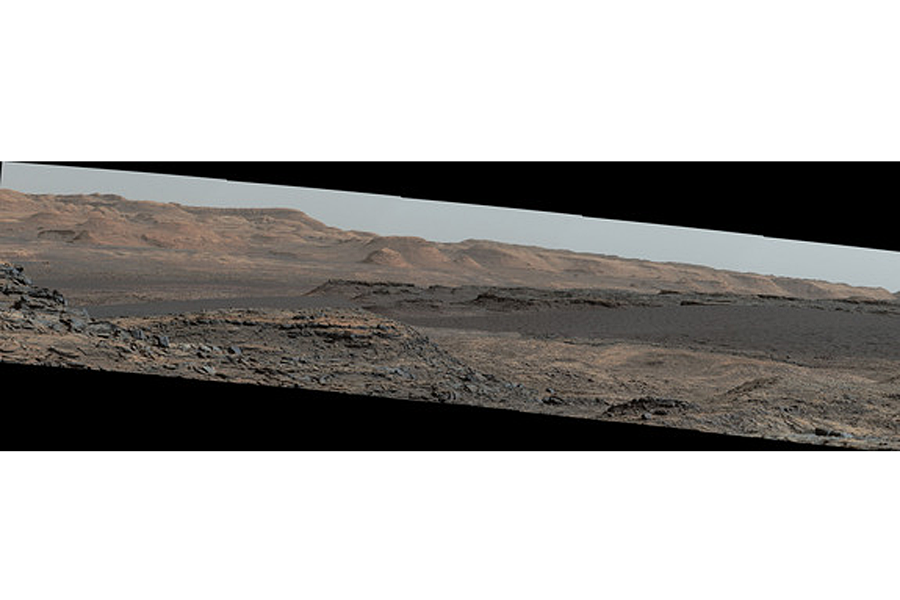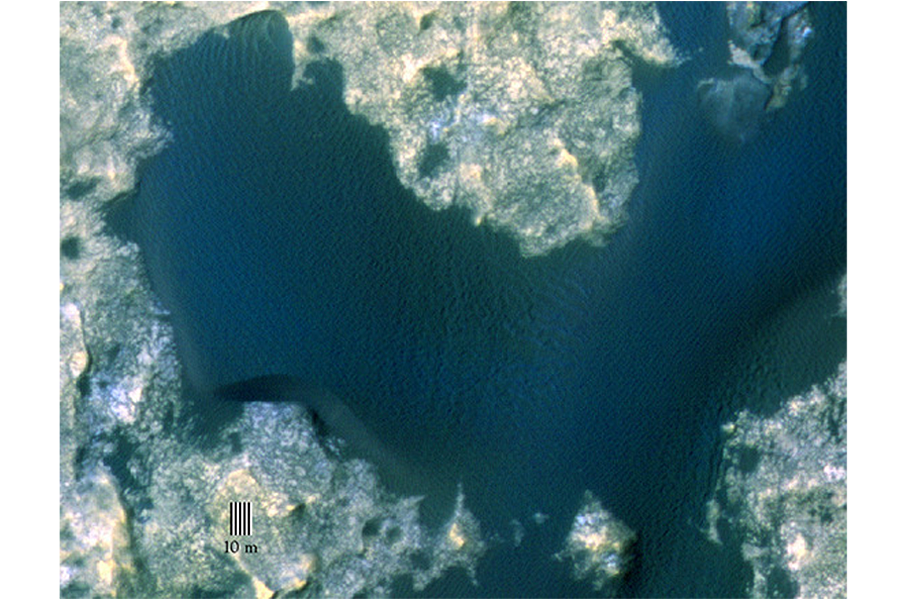What might Martian sand dunes reveal about the Red Planet?
Loading...
NASA's Curiosity rover will soon get history's first up-close look at Martian sand dunes.
Curiosity is headed toward the dark Bagnold Dunes, which lie in the northwestern foothills of the towering Mount Sharp, and should begin investigating the sandy feature in the next few days, NASA officials said.
The Bagnold Dunes are substantial; Curiosity will study one dune that's as wide as a football field and as tall as a two-story building, NASA officials said. And they're active; observations by Mars orbiters show that some of the dunes are moving by as much as 3 feet (1 meter) per year. [?Amazing Mars Rover Curiosity's Latest Photos]
"We've planned investigations that will not only tell us about modern dune activity on Mars but will also help us interpret the composition of sandstone layers made from dunes that turned into rock long ago," Bethany Ehlmann of the California Institute of Technology and NASA's Jet Propulsion Laboratory, both of which are located in Pasadena, California, said in a statement.
While Mars rovers have visited sandy swales in the past, no active dunes (which feature slopes steep enough for sand to slide down) have ever been studied up close on a world beyond Earth, NASA officials said.
When Curiosity reaches the Bagnold Dunes — which the mission team informally named after British military engineer, explorer and dune researcher Ralph Bagnold (1896-1990) — the rover will collect samples for analysis by its onboard instrument suite and scrape at the sand with a wheel to investigate differences between the surface and subsurface.
"These dunes have a different texture from dunes on Earth," Nathan Bridges, of the Johns Hopkins University's Applied Physics Laboratory in Laurel, Maryland, said in the same statement.
"The ripples on them are much larger than ripples on top of dunes on Earth, and we don't know why," added Bridges, who leads the planning for Curiosity's dune work along with Ehlmann. "We have models based on the lower air pressure. It takes a higher wind speed to get a particle moving. But now we'll have the first opportunity to make detailed observations."
The 1-ton Curiosity rover touched down inside Mars' huge Gale Crater in August 2012, on a $2.5 billion mission to determine if the Red Planet could ever have supported microbial life. The robot quickly answered that question in the affirmative, finding that Gale harbored a habitable lake-and-stream system in the ancient past.
The 3.4-mile-high (5.5 kilometers) Mount Sharp rises from the center of Gale Crater. Curiosity reached the mountain's base in September 2014 after a 14-month drive, and the rover is now working its way slowly up the mountain, reading a history of Mars' changing environmental conditions in the rocks as it goes.
Follow us @Spacedotcom, Facebook or Google+. Originally published on Space.com.
- Mars Myths & Misconceptions: Quiz
- Curiosity’s 3 Year Martian Road-Trip Tells Tantalizing Tales Of Water | Video
- Huge Mars Robot Armed With Laser, Cameras, Curiosity (Infographic)
Copyright 2015 SPACE.com, a Purch company. All rights reserved. This material may not be published, broadcast, rewritten or redistributed.










